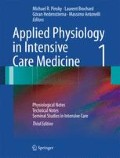Abstract
Purpose: To systematically review the published evidence on the ability of passive leg raisinginduced changes in cardiac output (PLR–cCO) and in arterial pulse pressure (PLR–cPP) to predict fluid responsiveness. Methods: MEDLINE, EMBASE and the Cochrane Database of Systematic Reviews were screened. Clinical trials on human adults published as full-text articles in indexed journals were included. Two authors independently used a standardized form to extract data about study characteristics and results. Study quality was assessed by using the QUADAS scale. Results: Nine articles including a total of 353 patients were included in the final analysis. Data are reported as point estimate (95% confidence intervals). The pooled sensitivity and specificity of PLR-cCO were 89.4% (84.1–93.4%) and 91.4% (85.9– 95.2%) respectively. Diagnostic odds ratio was 89.0 (40.2–197.3). The pooled area under the receiver operating characteristics curve (AUC) was 0.95 (0.92–0.97). The pooled correlation coefficient r between baseline value of PLR–cCO and CO increase after fluid load was 0.81 (0.75–0.86). The pooled difference in mean PLR-cCO values between responders and non-responders was 17.7% (13.6–21.8%). No significant differences were identified between patients adapted to ventilator versus those with inspiratory efforts nor between patients in sinus rhythm versus those with arrhythmias. The pooled AUC for PLR–cPP was 0.76 (0.67–0.86) and was significantly lower than the AUC for PLR-cCO (p<0.001). The pooled difference in mean PLR-cPP values between responders and non-responders was 10.3% (6.5–14.1%). Conclusions: Passive leg raising-induced changes in cardiac output can reliably predict fluid responsiveness regardless of ventilation mode and cardiac rhythm. PLR–cCO has a significantly higher predictive value than PLR-cPP.
Access this chapter
Tax calculation will be finalised at checkout
Purchases are for personal use only
Preview
Unable to display preview. Download preview PDF.
Author information
Authors and Affiliations
Editor information
Editors and Affiliations
Rights and permissions
Copyright information
© 2012 Springer-Verlag Berlin Heidelberg
About this chapter
Cite this chapter
Cavallaro, F. et al. (2012). Diagnostic accuracy of passive leg raising for prediction of fluid responsiveness in adults: systematic review and meta-analysis of clinical studies. In: Pinsky, M., Brochard, L., Hedenstierna, G., Antonelli, M. (eds) Applied Physiology in Intensive Care Medicine 1. Springer, Berlin, Heidelberg. https://doi.org/10.1007/978-3-642-28270-6_42
Download citation
DOI: https://doi.org/10.1007/978-3-642-28270-6_42
Published:
Publisher Name: Springer, Berlin, Heidelberg
Print ISBN: 978-3-642-28269-0
Online ISBN: 978-3-642-28270-6
eBook Packages: MedicineMedicine (R0)

